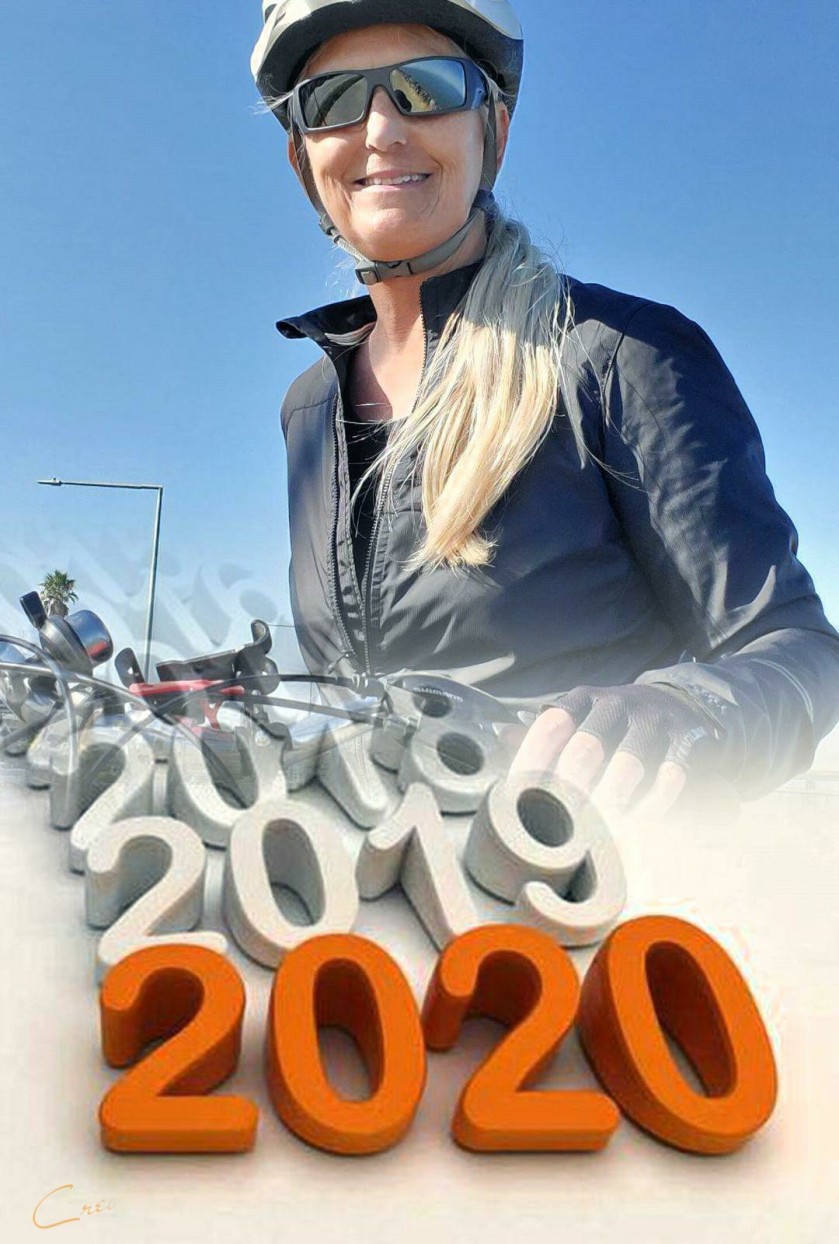
Should you ride? Should you wear a mask? Should you ride with friends? These are just a couple of the questions you’re probably asking yourself right now.
In November of 2018, we were having horrible fires in California after years of drought and to ride my bicycle I had to order and wear N95 masks. I bought a box of 20 and barely used them because the air quality improved pretty quick in my area. That’s me above riding at that time.
It was horrible to wear a mask while riding. As you can probably imagine under that mask my face was sweaty, it fogged my sunglasses, and my nose was running. I was still glad to have them at that time and now I’m glad to have the remainder since the virus showed up and you can’t find masks.
The coronavirus is making history there’s no denying it and it’s here to stay. For how long we can’t say. It’s scary and there’s a lot of fake news swirling around amongst the real news that can make your head spin. Then there’s the fact that we are sheltering in place, not allowed to see other people, and homebound while our whole lives are changing. It can drive you crazy.
I’ve been bike riding the whole time and since I’ve been riding there have been many changes. The Bay Trail where I ride went from the regulars to crowds of newcomers and their kids. These people could care less about the rules set in place for sharing the Bay Trail. It was frustrating, to say the least until the authorities stepped in. Thank heavens they did it was getting crazy and people were not distancing.
The park’s parking lots were closed, groups were limited to 10 people or less, walkways were blocked, parks were closed, and more. The Bay Trail is a very large trail that goes around the entire San Francisco Bay so there’s really no way to close it but it did limit people’s access to it somewhat.

My friend Anoush (77) and I rode last Wednesday before most of the parking lots were shut down but we had a nice ride. We keep our distance from each other and other people and don’t hug after a ride like we used to.
Should I ride?
I think I read that if you exercise outside that you should distance yourself from others and keep within 5 miles of your home. If you ride with a large group that’s a no-no but riding with a friend or 2 should be fine as long as you’re careful and know who you’re riding with. So there’s nothing wrong with taking a ride during this time.
Keeping up with your exercise program (cycling) is extra important because it helps the boredom and keeps you healthy. Constant sitting all day is as bad as smoking cigarettes! Exercise also helps you sleep better at night. Maintain your health by daily exercise, eating right, and getting enough sleep.
If you don’t ride, you should think about starting. With gyms and other workout venues being closed I think we’re lucky to have something we can do at this time! Running is good but if you want low impact biking is your answer. It gives you a strong core and strengthens your legs. It promotes balance and agility. I’m 65 and bike with people in their 80’s so anyone can do it. It’s aerobic and fun.
There are a few things to think about while riding now.
- Don’t ride behind joggers, runners or walkers for very long.
- Keep your distance (6 ft.) from everyone unless passing.
- When passing keep the widest berth you can.
- Pass as quickly as you can and don’t get distracted or chat.
- If you see someone coughing, spitting, or blowing their nose in the air avoid them at all costs.
- If someone gets too close or is doing something you don’t like wait or take another route past them.
- Because traffic is sparse now the street (bike lanes) are often a good bet.
- If riding with a friend don’t share water or sit close together on breaks.
- When pressing buttons for street crossings use the same knuckle on either hand so you don’t touch your face.
- There are no places to stop and sit for coffee.
- Bathrooms are now closed so make sure you go before you bike!
- Carry hand sanitizer with you on your bike and use it during or after you get home.
Should you wear a mask?
This is the million-dollar question. I don’t wear a mask while biking but I do when I go anywhere else. Because we are alone most of the time on our bikes in the fresh air there’s nothing to worry about. It’s those times that we encounter people on the trail and have to pass that’s important. Like I said earlier masks are not comfortable but if it makes you feel better then wear one. If you don’t have one a bandana or scarf, any type of coverage is good. The virus can live in the air for a short amount of time so the choice is yours. I feel if I’m careful I can avoid catching it.

Peter (59) is another friend I ride with during this virus. We also keep our distance. Peter wears a bandana over his mouth but only because he has allergies.
Riding during this time is awesome to me because I still have some freedom left. When I ride it makes me feel so good it’s hard to explain. Afterward, I feel great because I burned calories, got my ya-ya’s out, maybe saw a friend, and enjoyed the beautiful trails in the springtime. I love biking and always look forward to my rides. I can only hope they don’t crack down on getting fresh air or I’m toast.
I haven’t had the flu in a couple of years nor a cold. I’m a senior (65) and only take meds for my thyroid and have no heart problems. I’m in great health and all due to living a healthy lifestyle. I have written much about how to live a healthy lifestyle on this blog so please take the time to learn. If this isn’t the time to start I don’t know when is.
Take the time to ride while we are on lockdown. Don’t be afraid to ride with a friend you can trust not to be sick. Stay in good health. People who are healthy are more likely to stay that way and don’t get sick as much. This is a fact look it up yourself. This is a historical time of many firsts for our world and we need something to help us get by. Trust in cycling and keep the faith.
Don’t get sick. Follow the rules. Stay healthy. Stay safe. Big virtual hug!
I changed the name of this blog to Let’s Ride. I hope you’ll keep stopping by to enjoy learning about biking and health.














